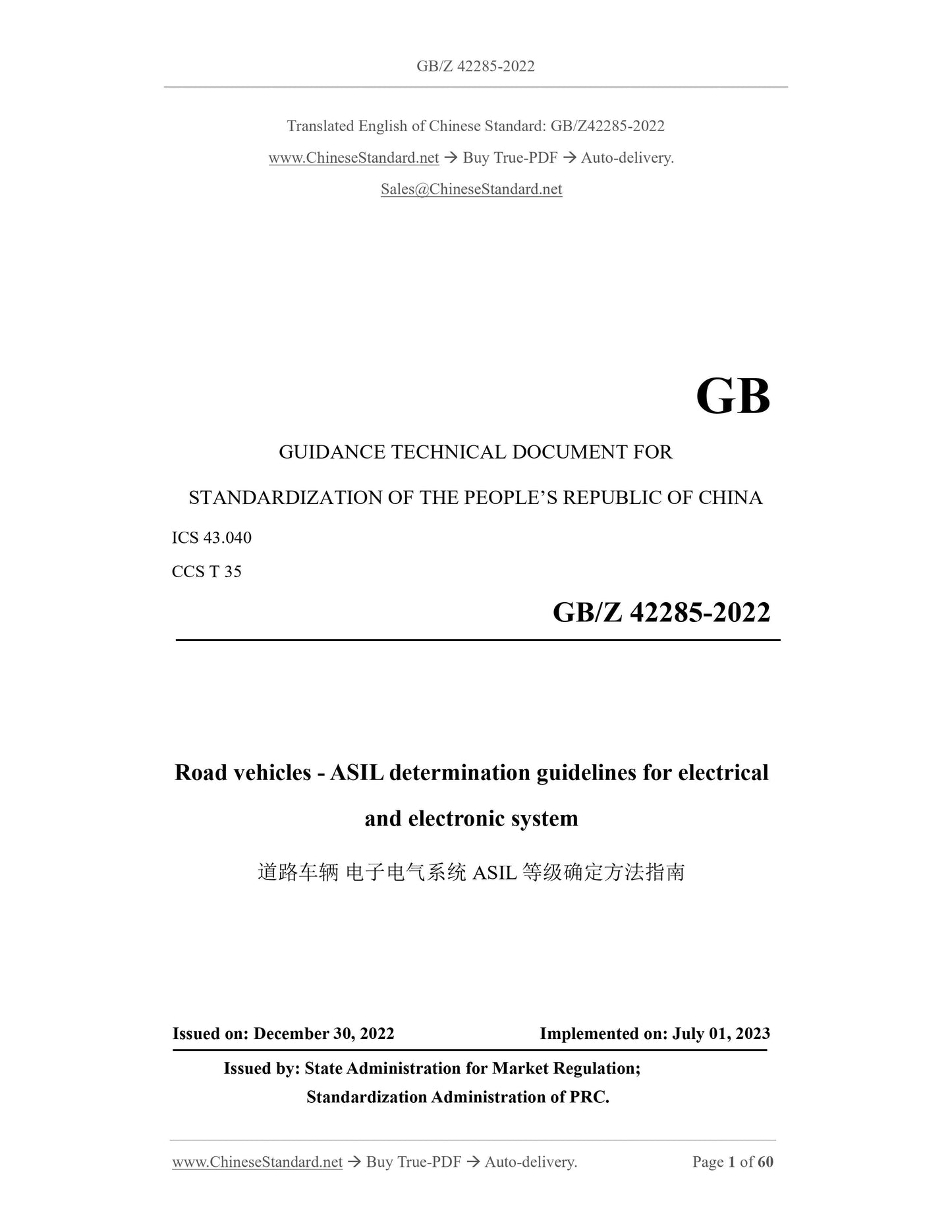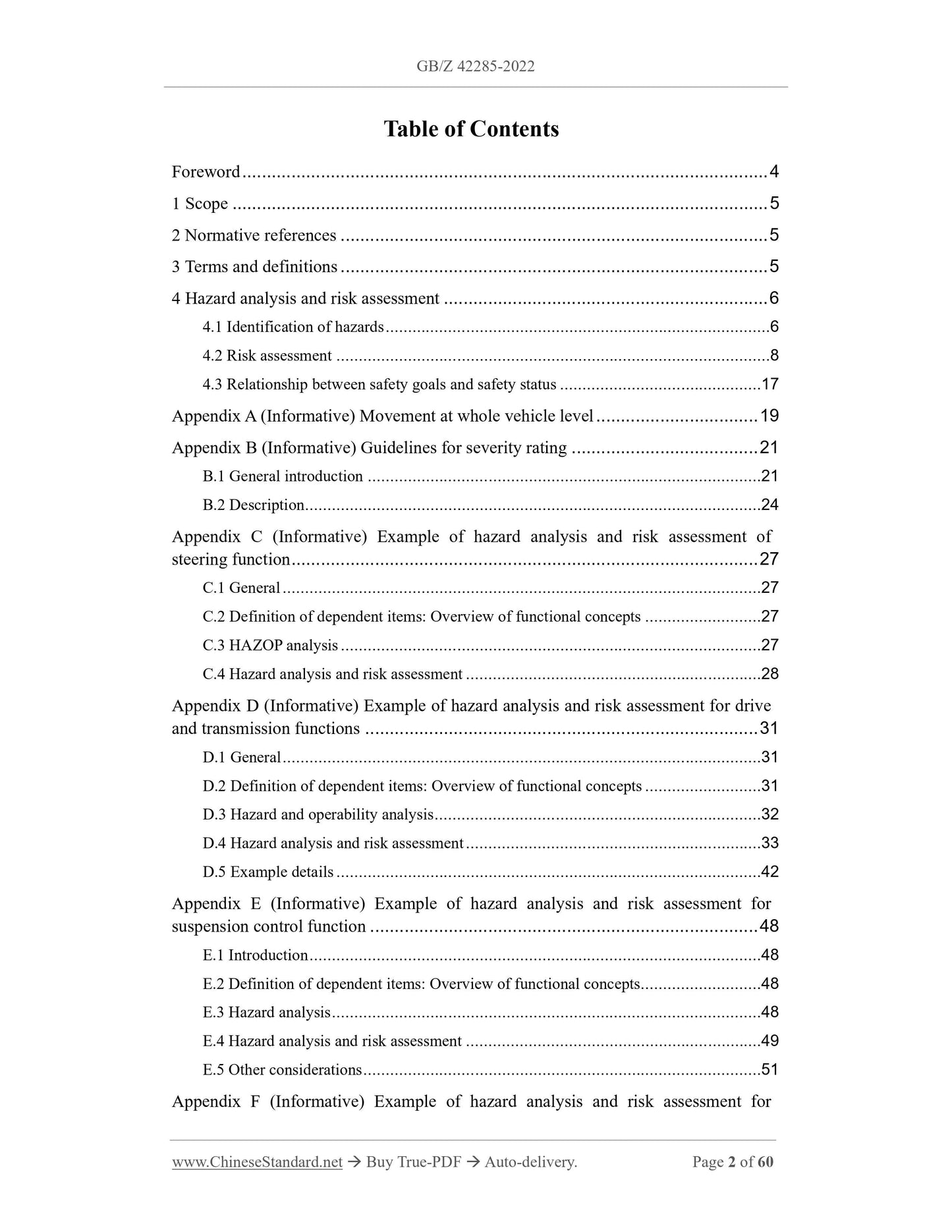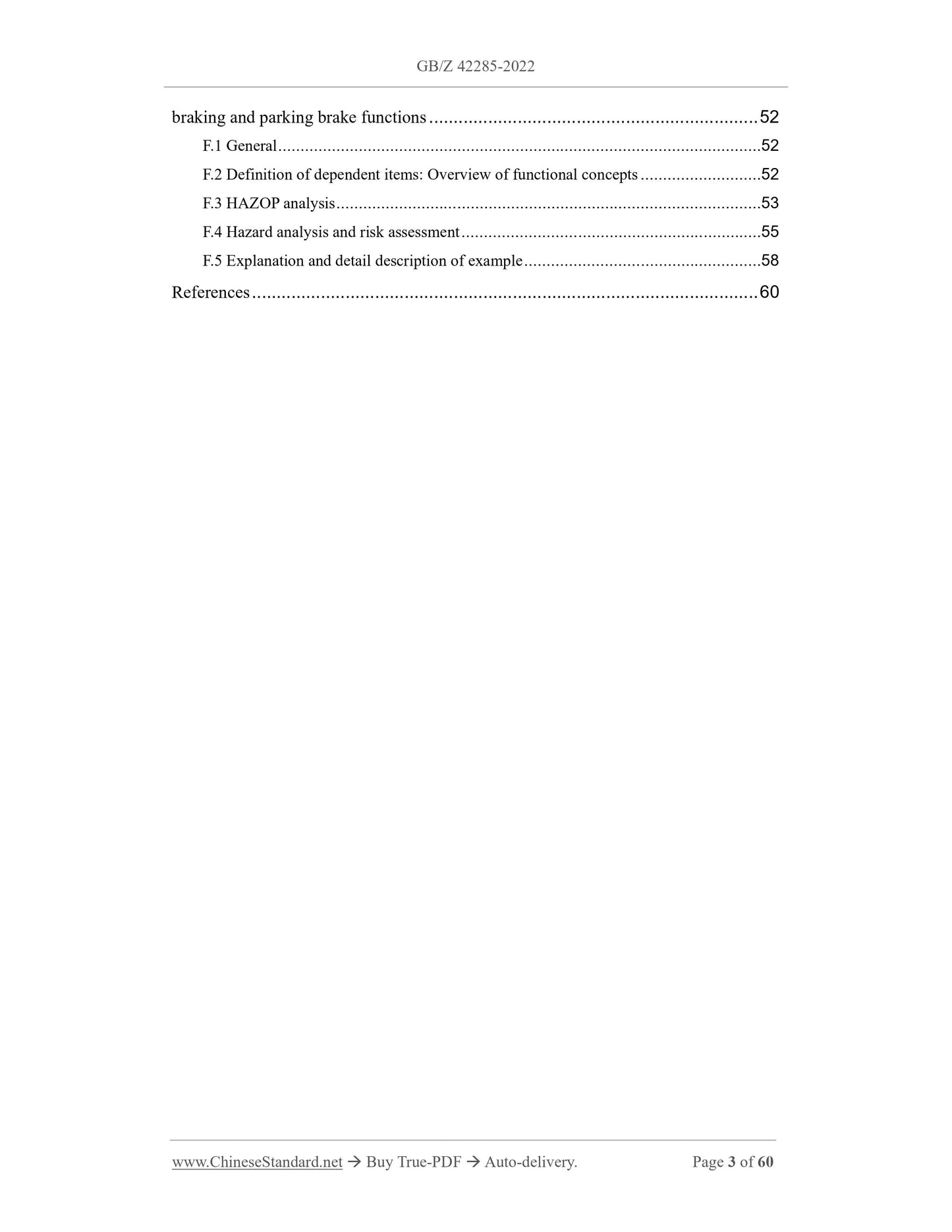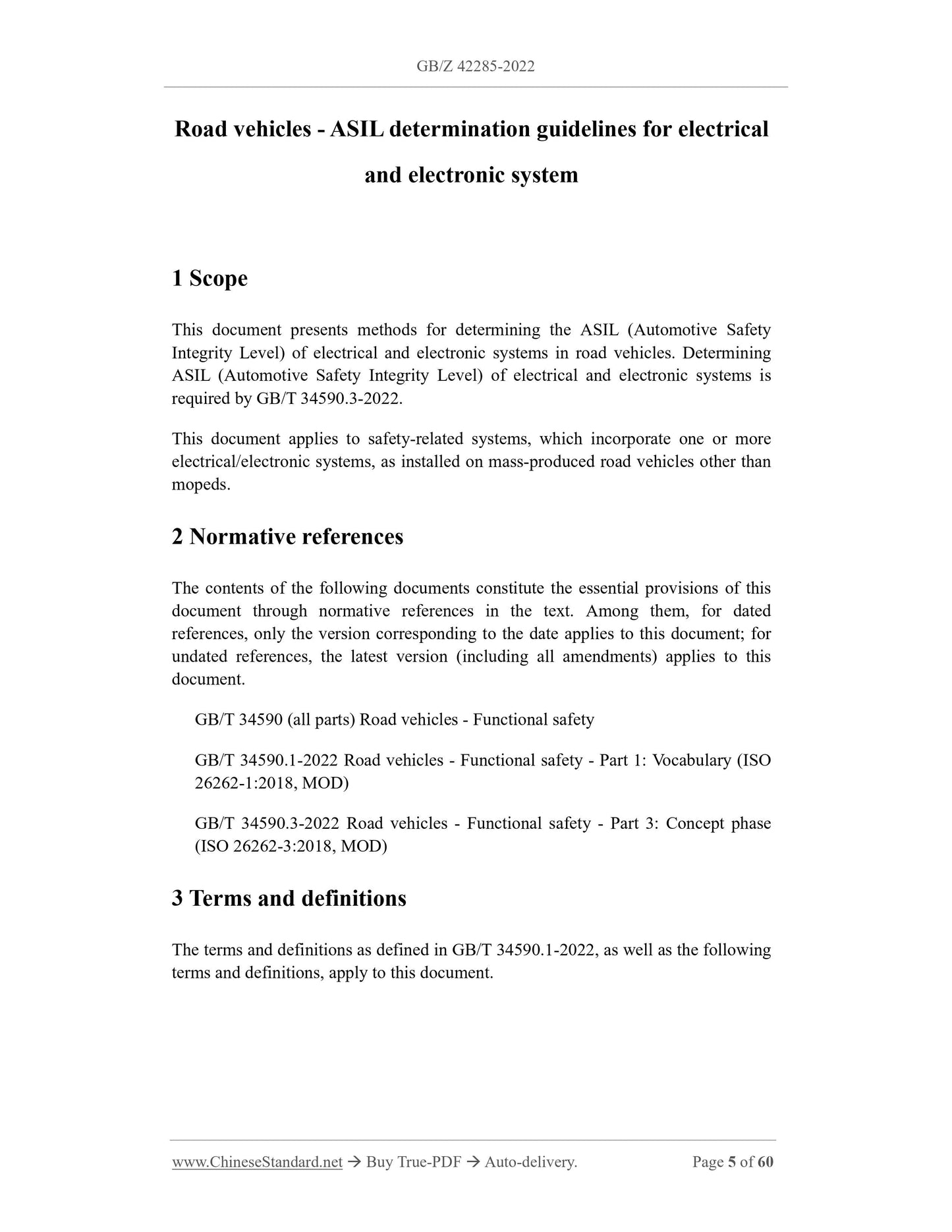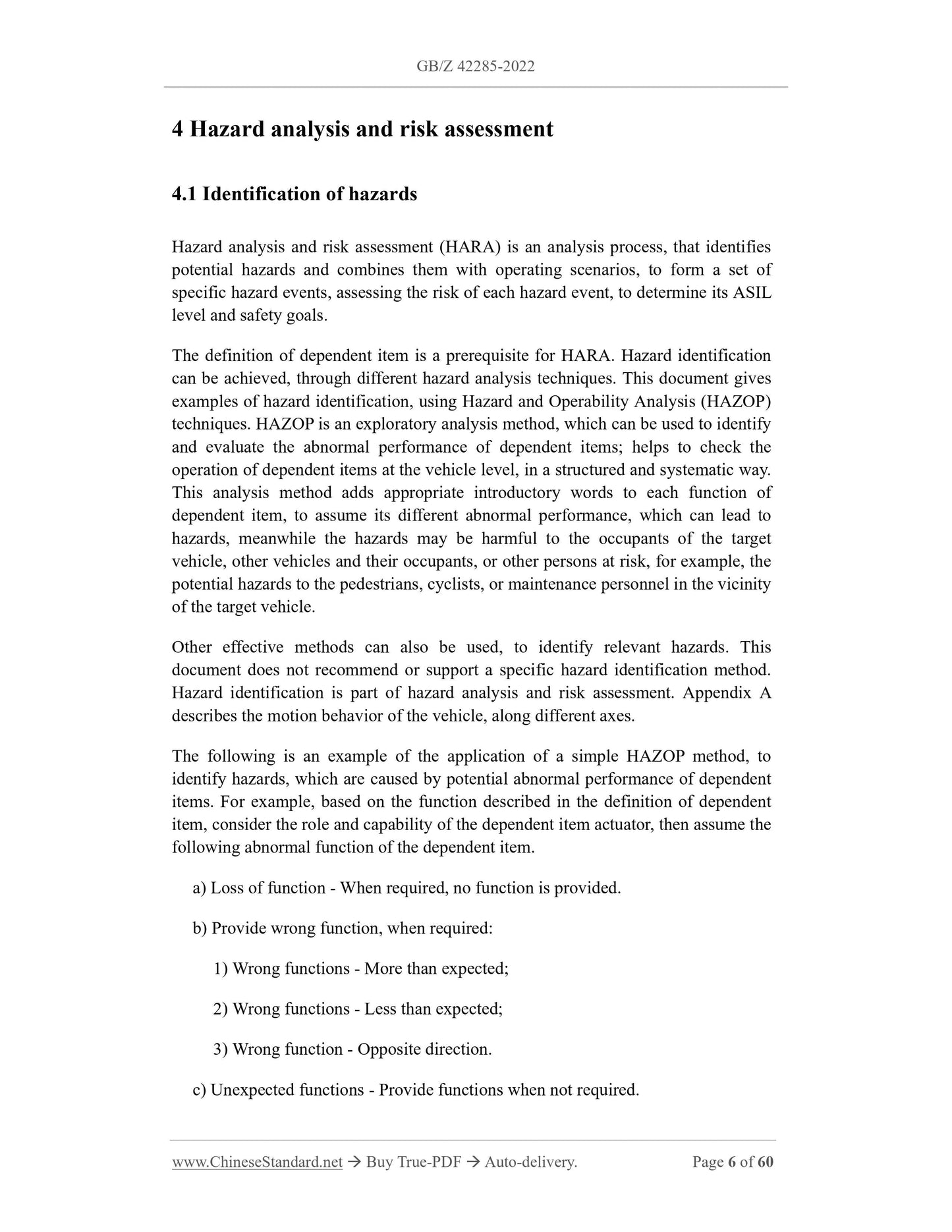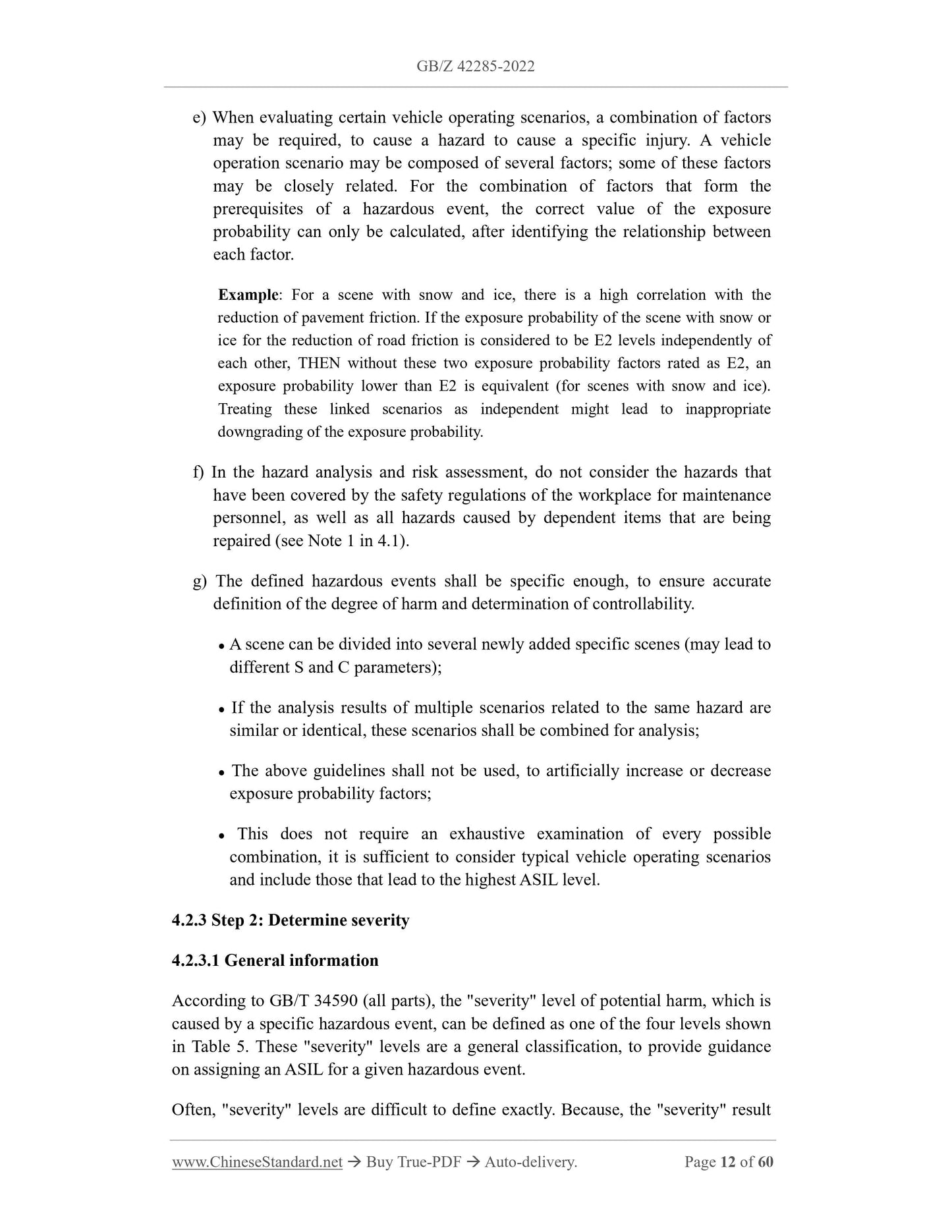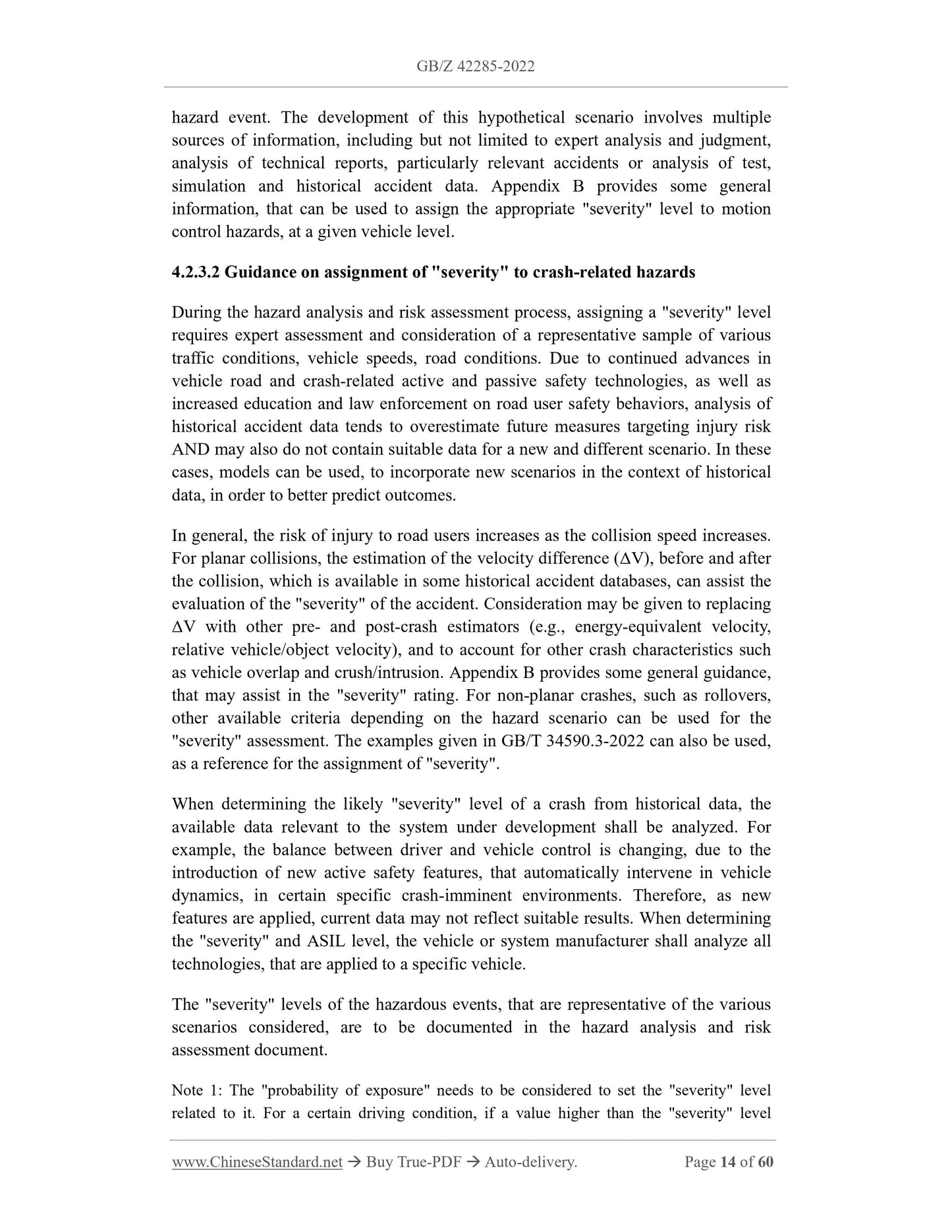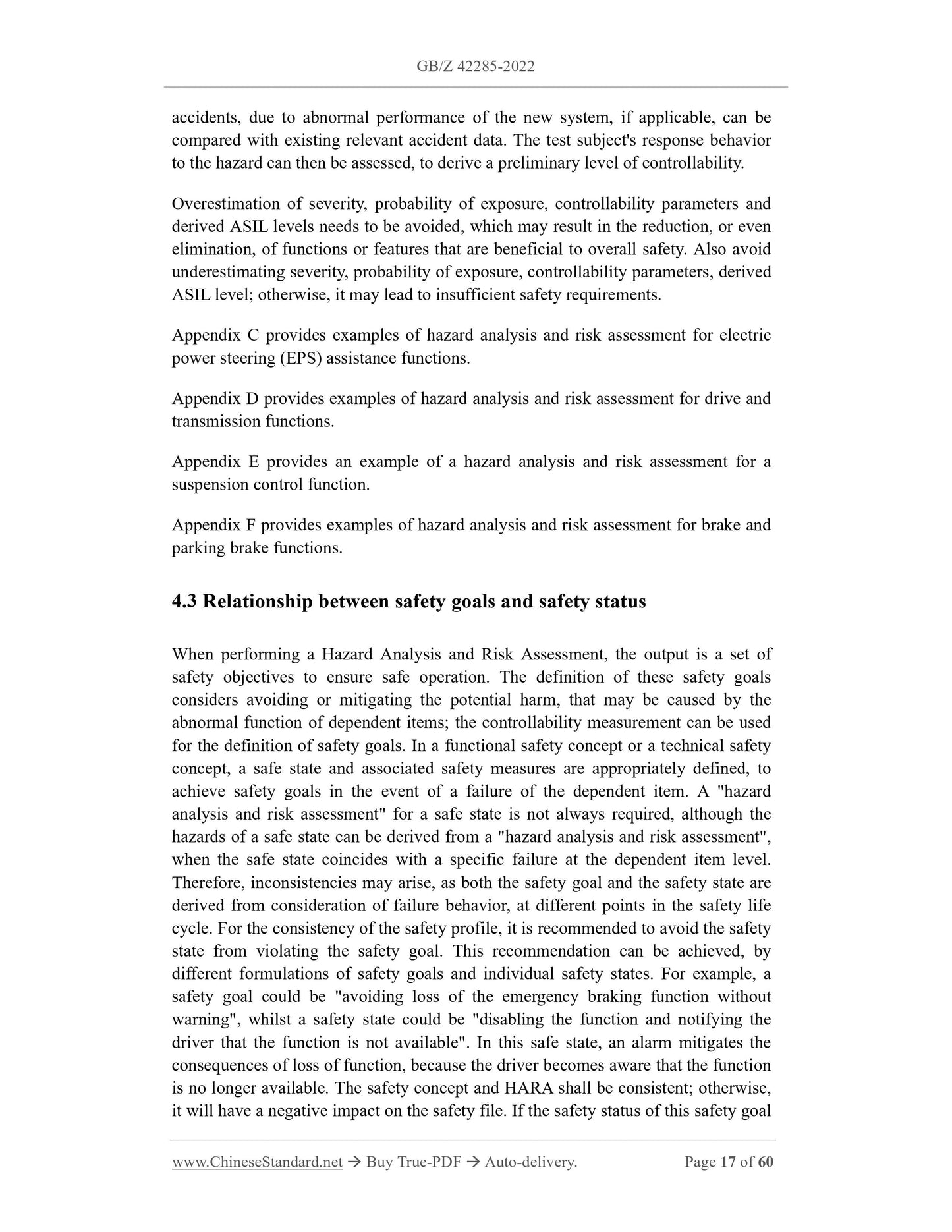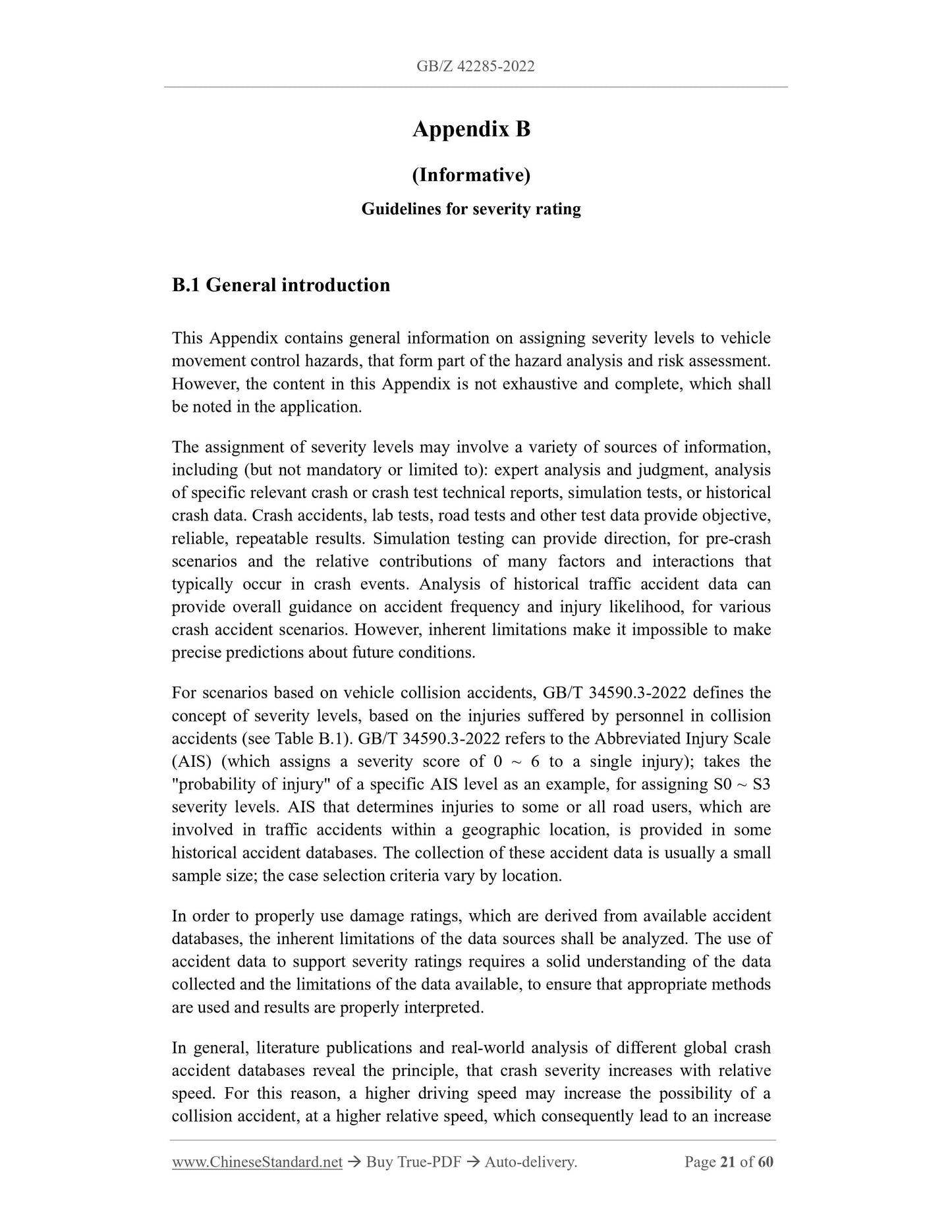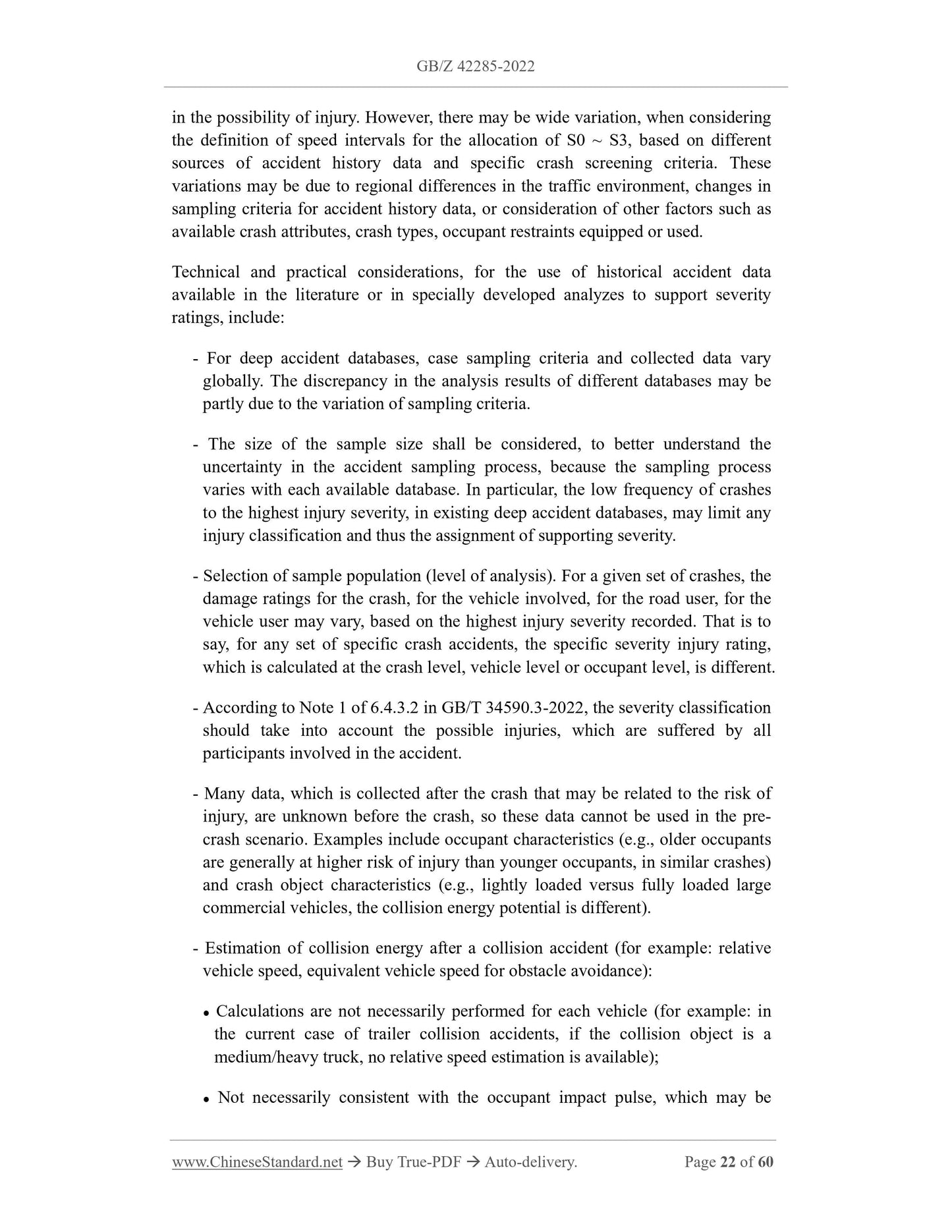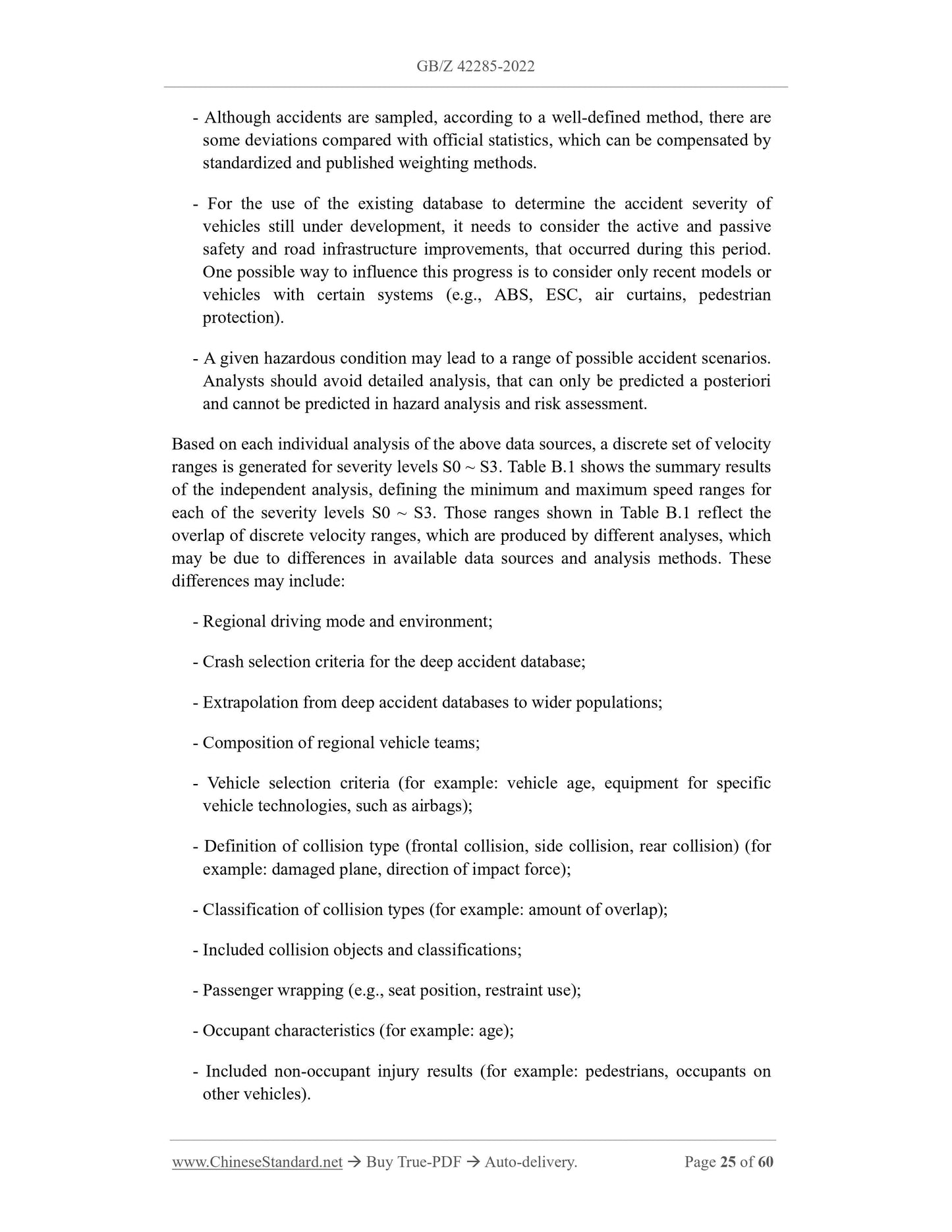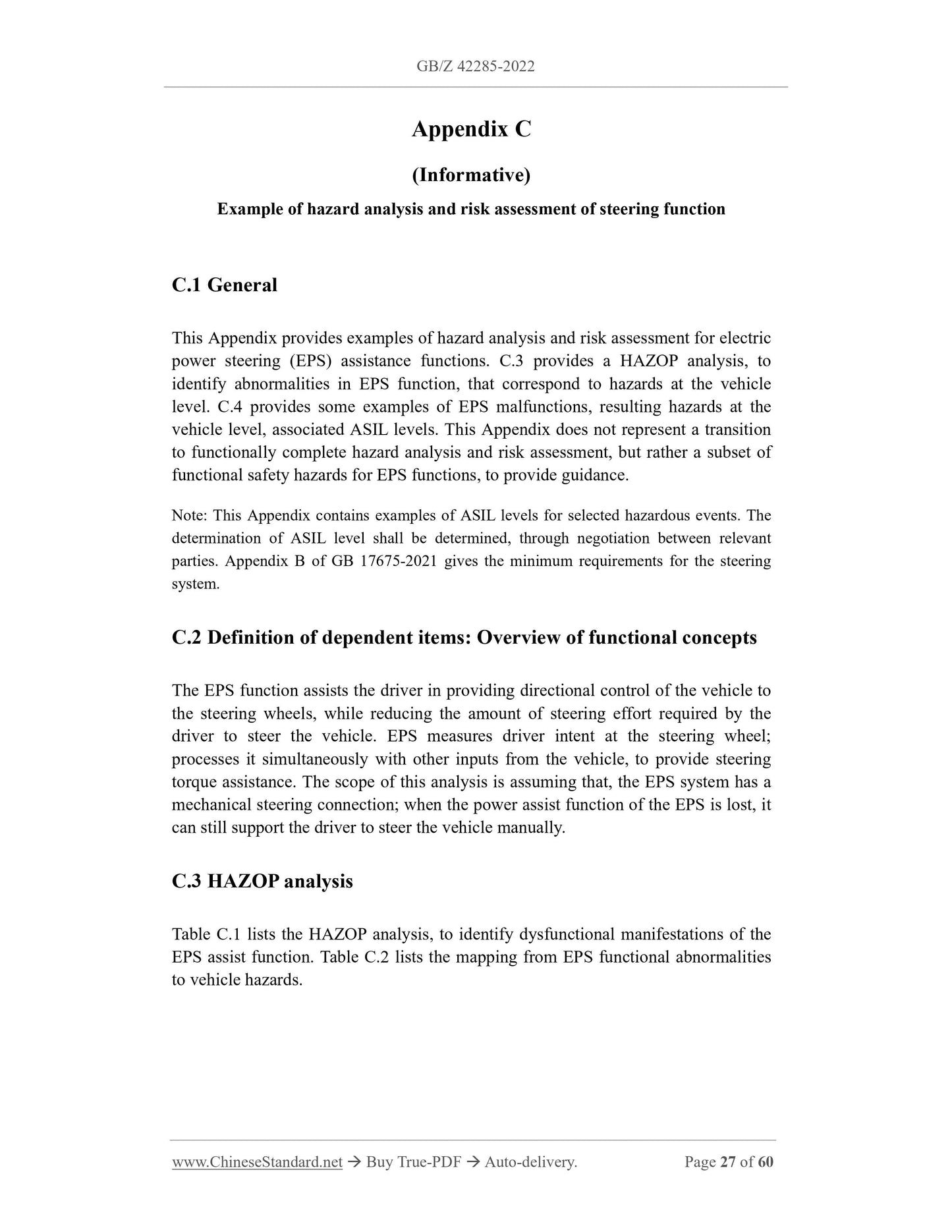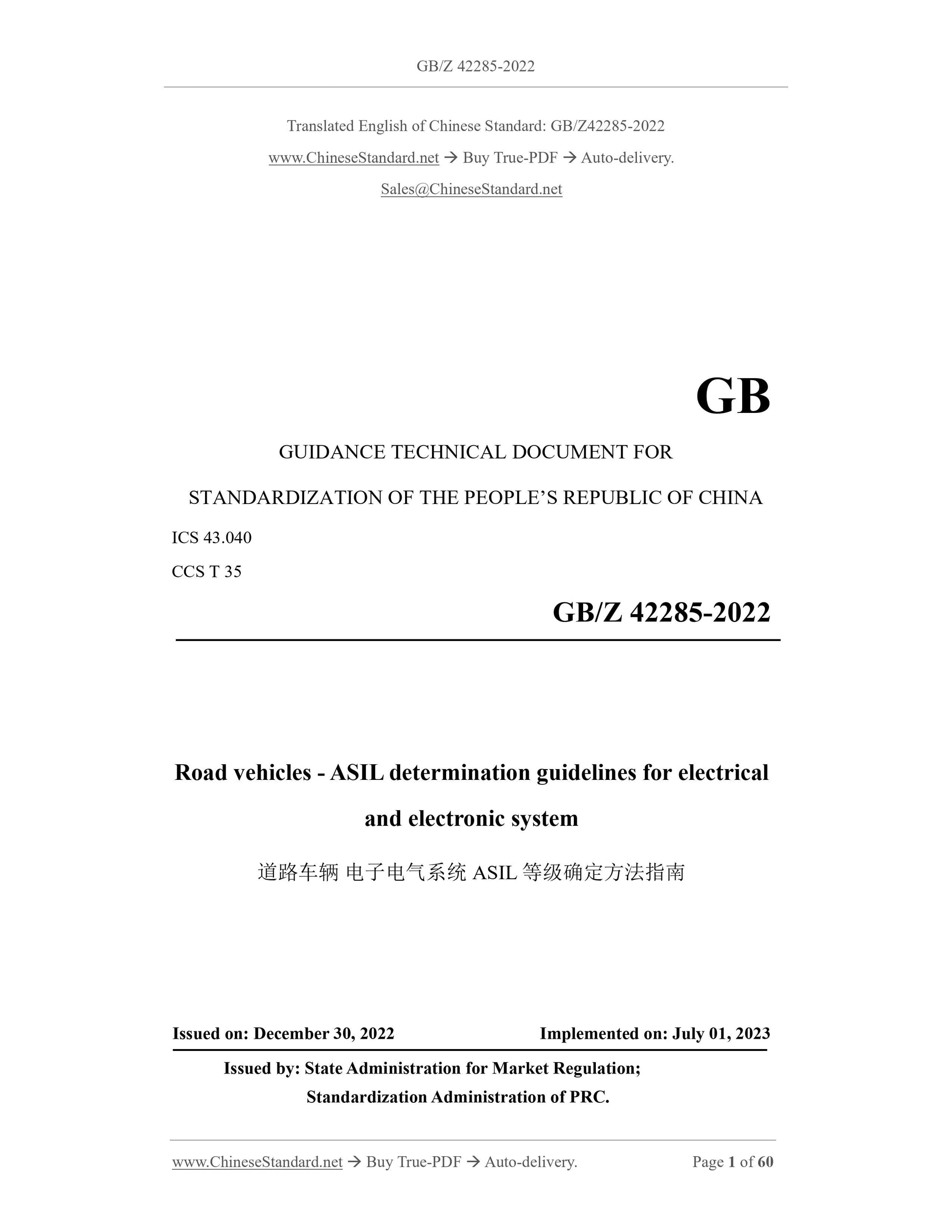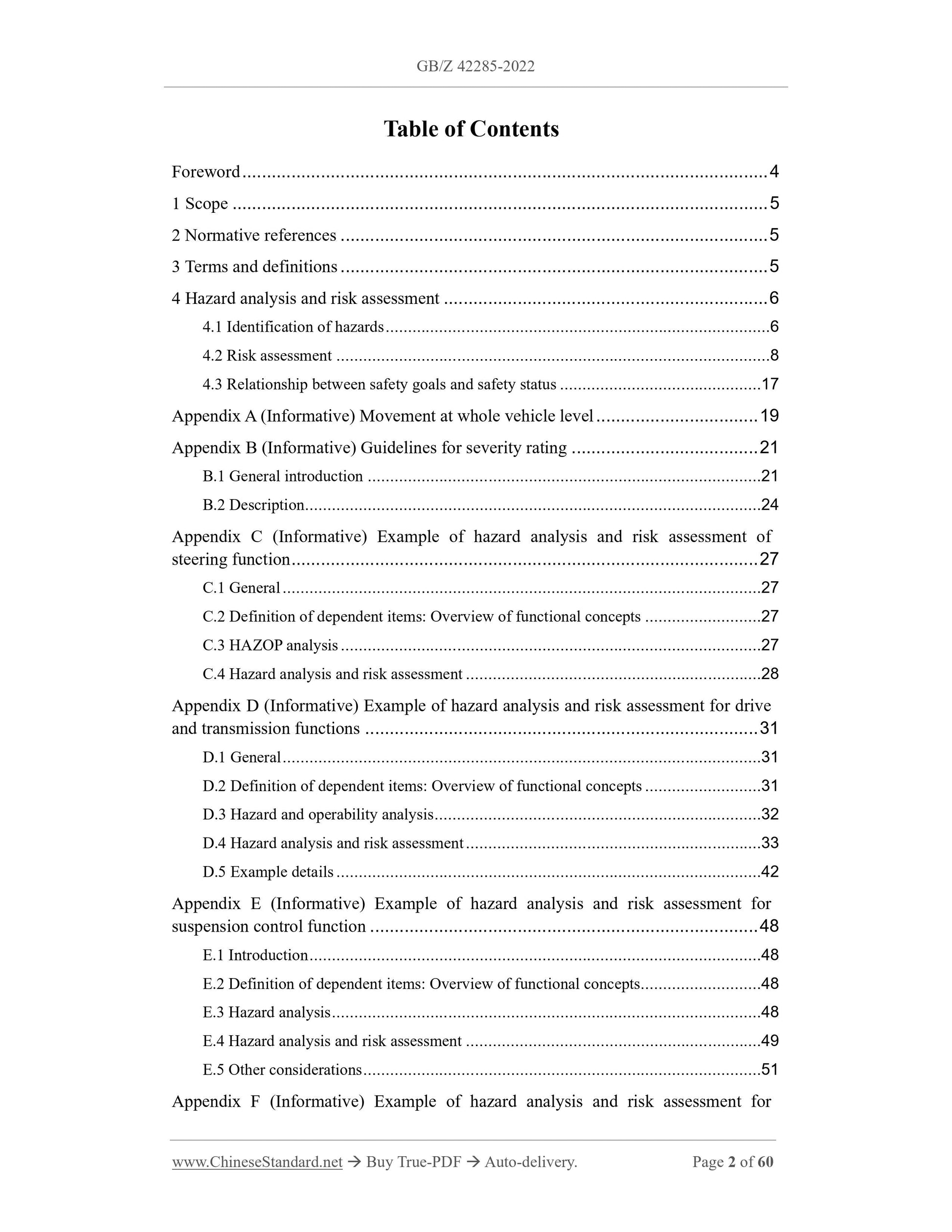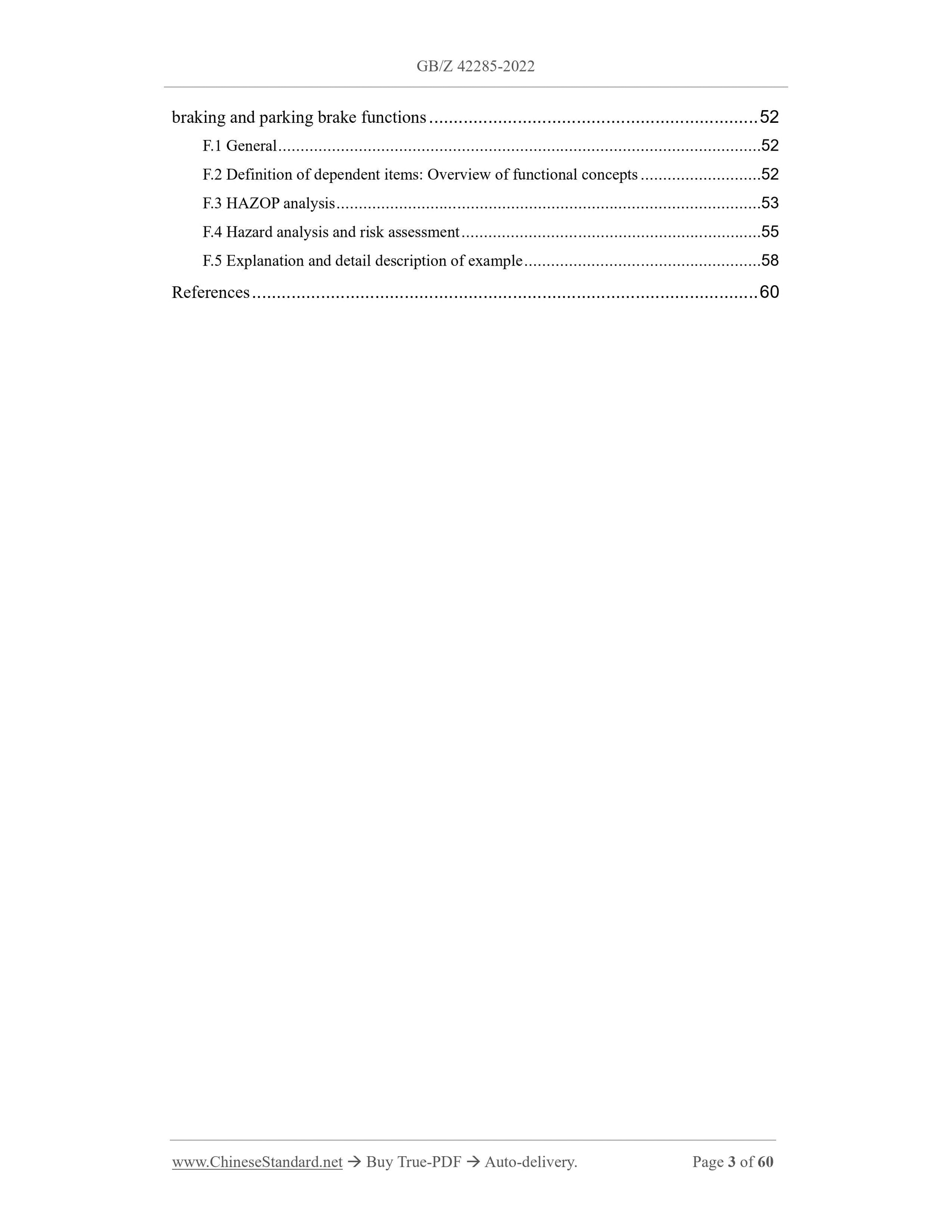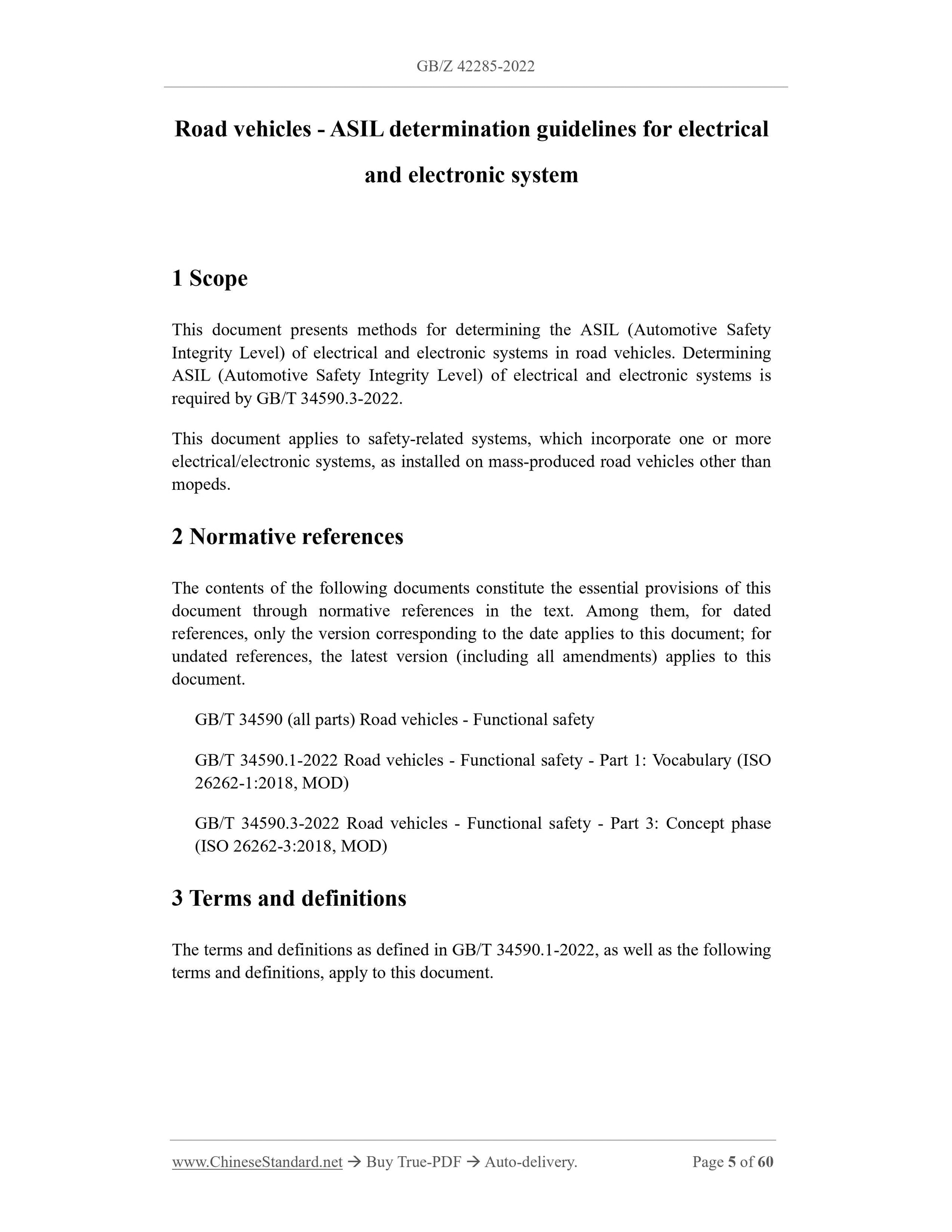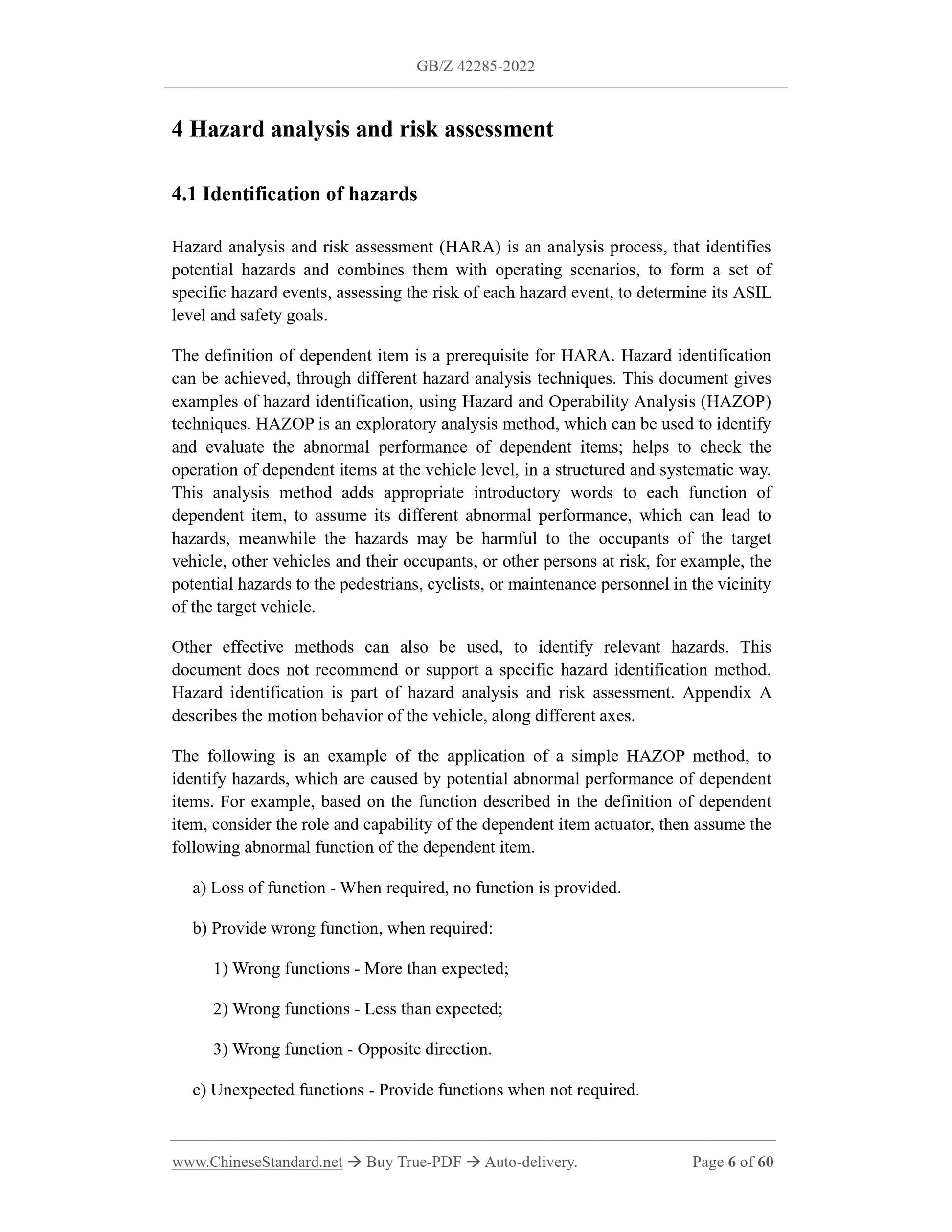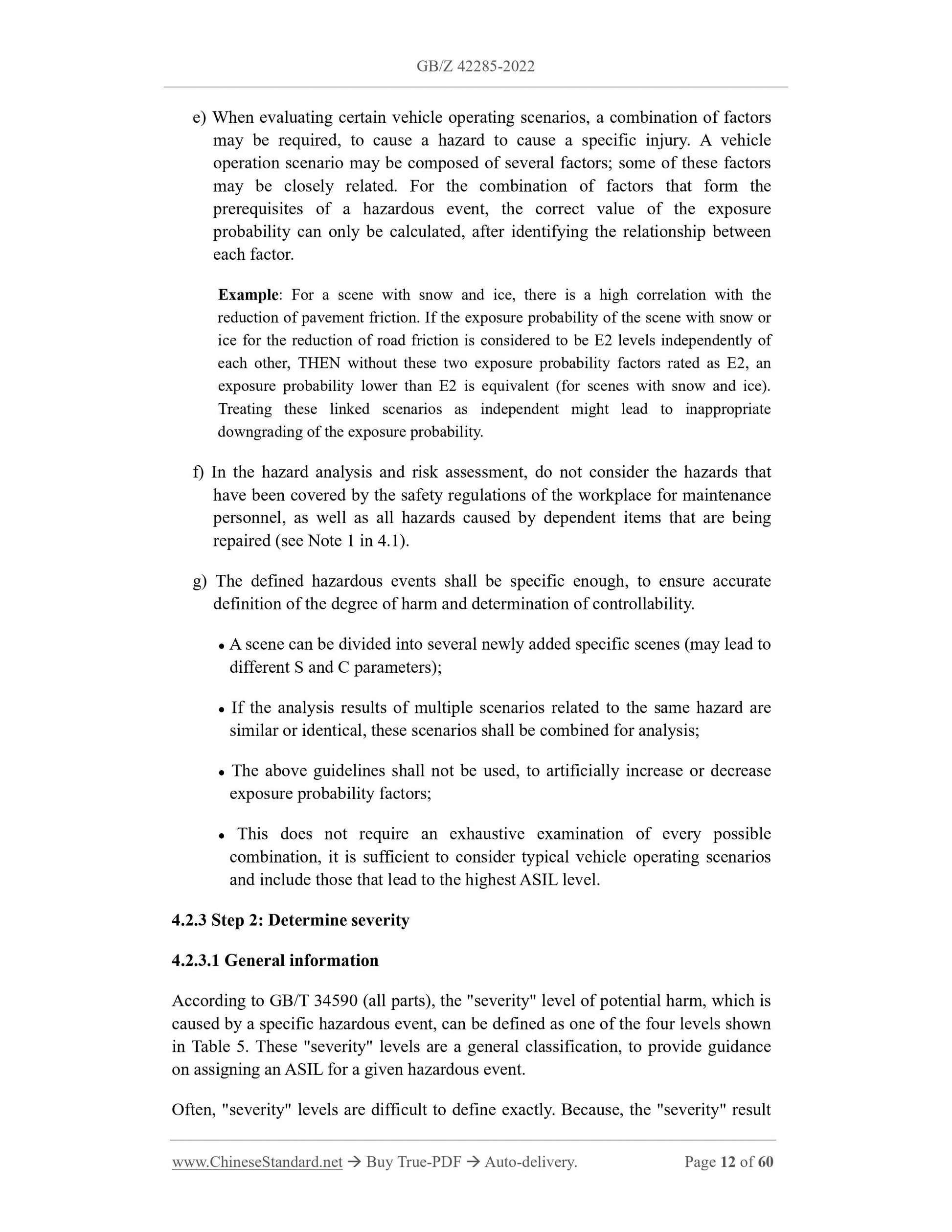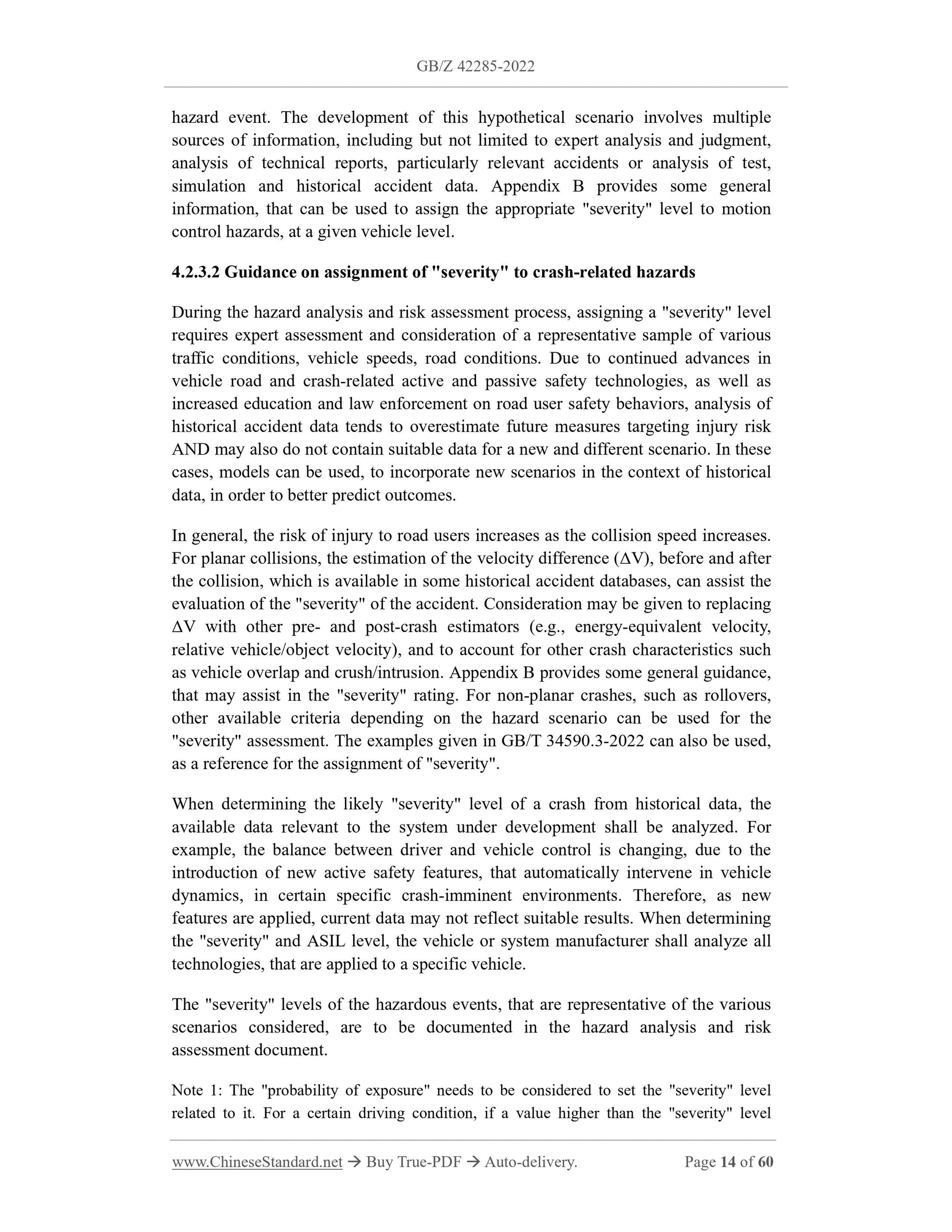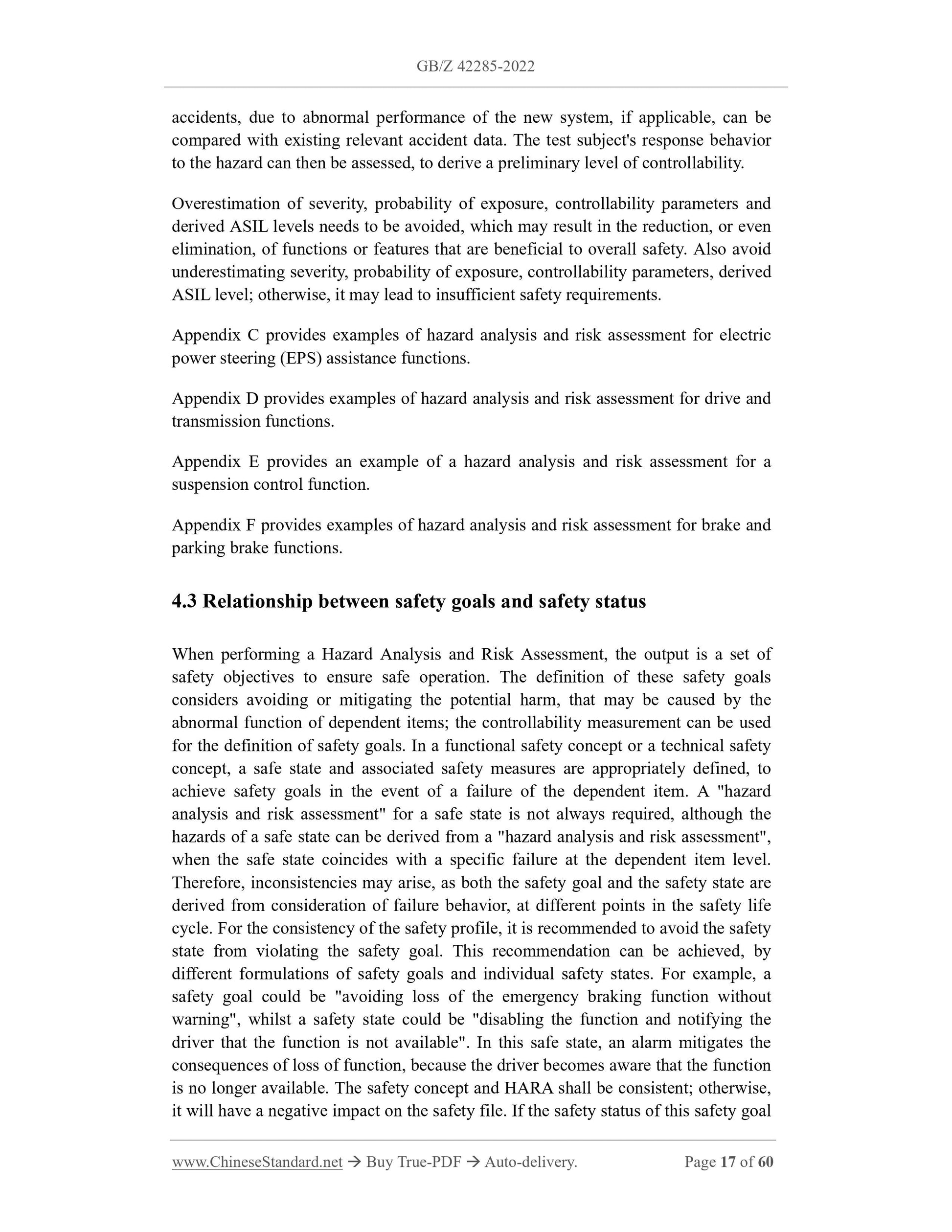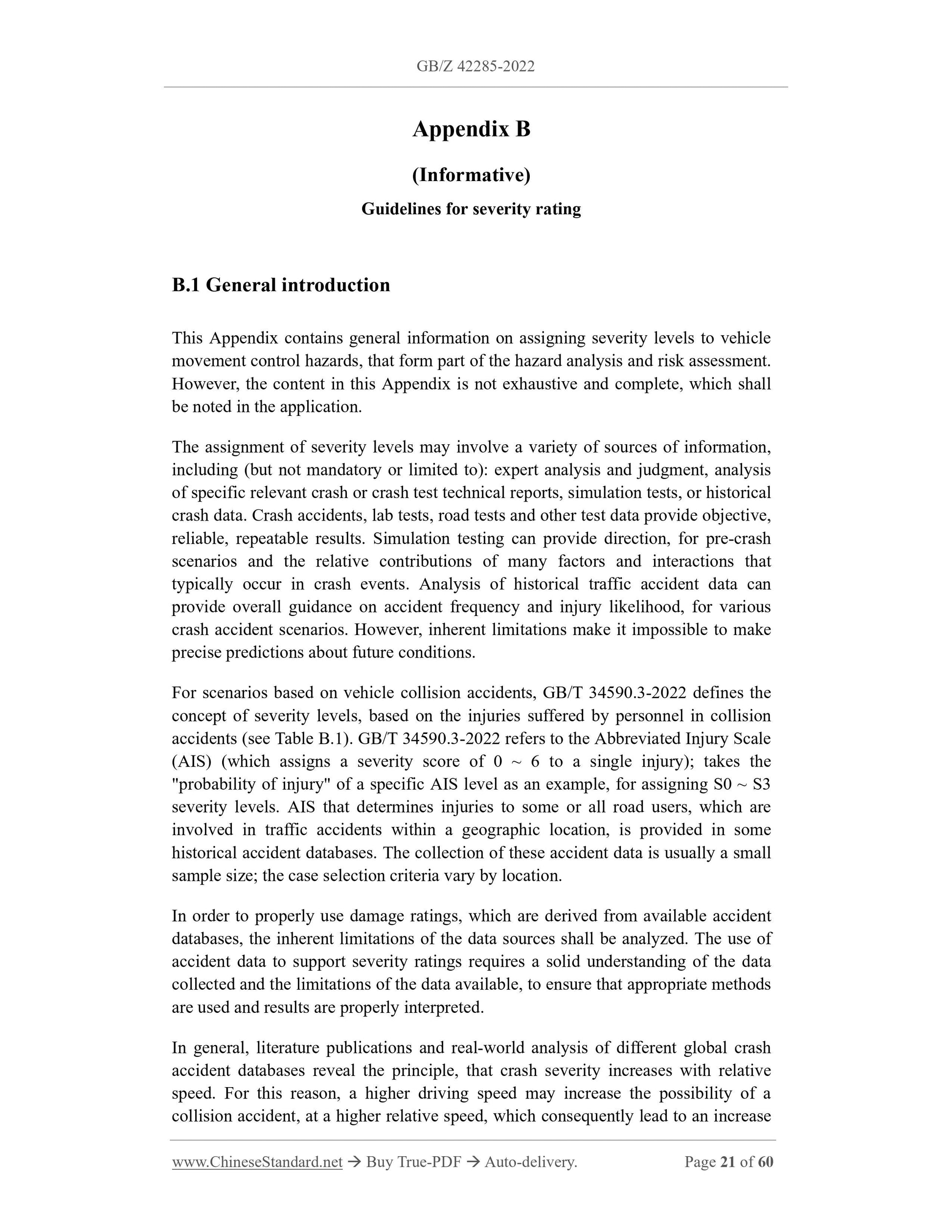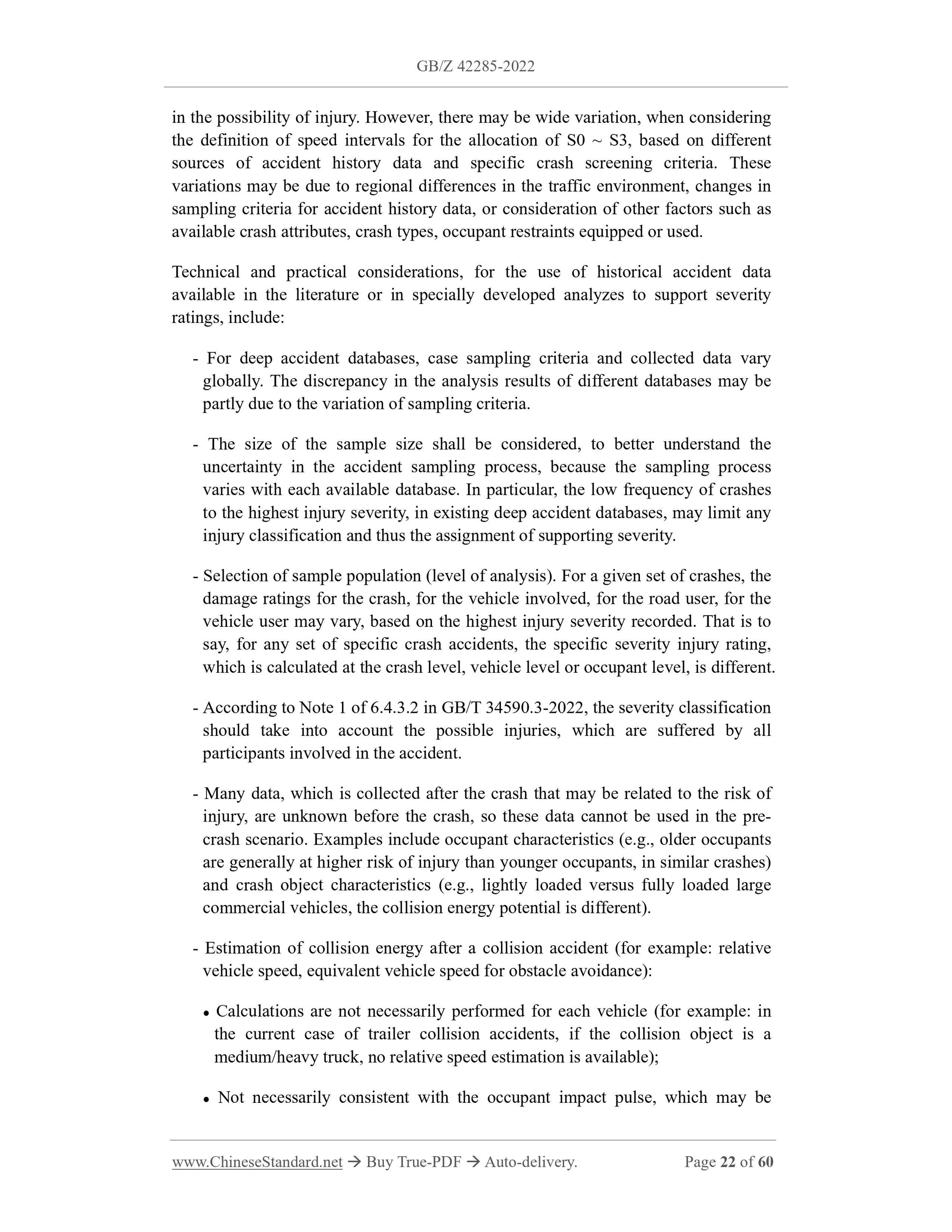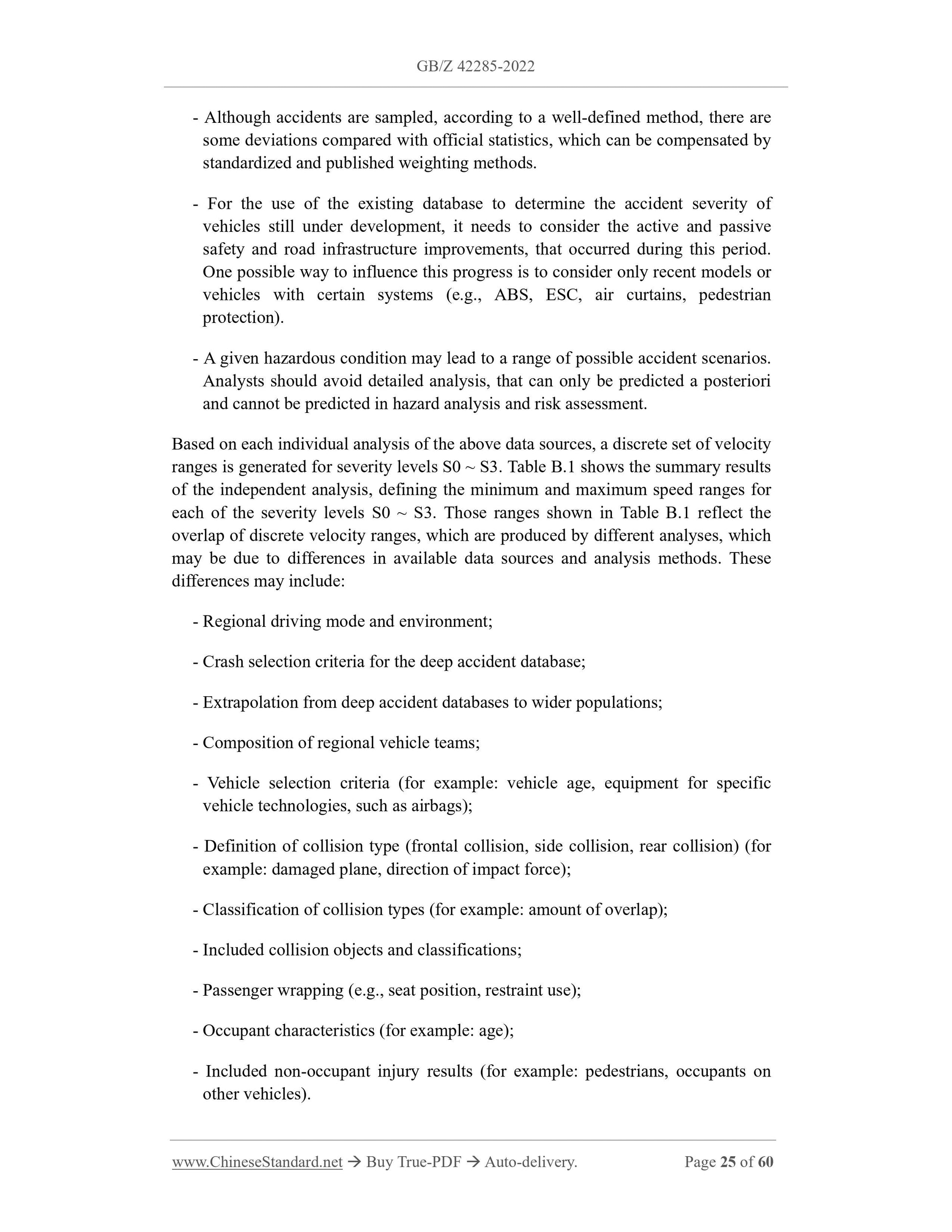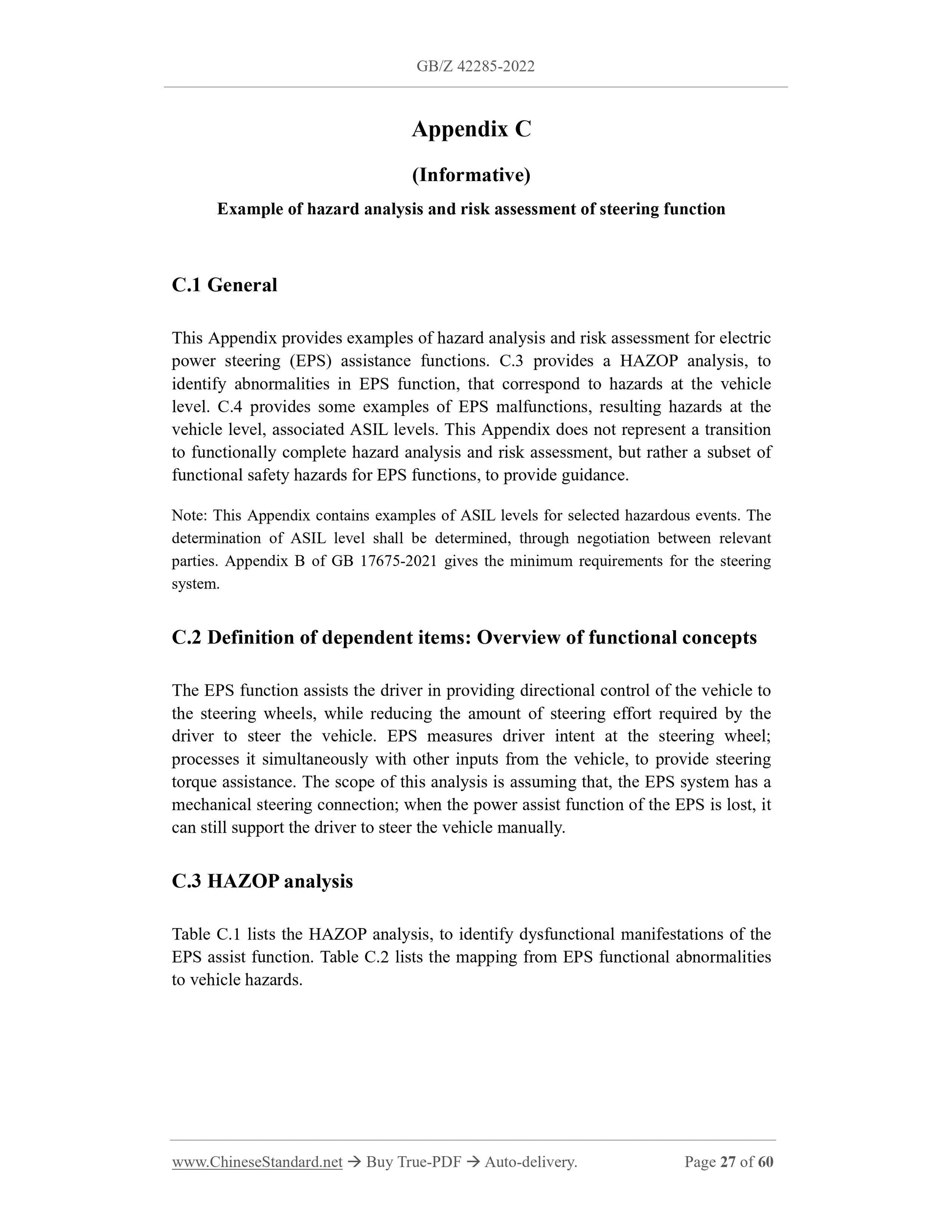1
/
of
12
www.ChineseStandard.us -- Field Test Asia Pte. Ltd.
GB/Z 42285-2022 English PDF (GB/Z42285-2022)
GB/Z 42285-2022 English PDF (GB/Z42285-2022)
Regular price
$755.00
Regular price
Sale price
$755.00
Unit price
/
per
Shipping calculated at checkout.
Couldn't load pickup availability
GB/Z 42285-2022: Road vehicles - ASIL determination guidelines for electrical and electronic system
Delivery: 9 seconds. Download (and Email) true-PDF + Invoice.Get Quotation: Click GB/Z 42285-2022 (Self-service in 1-minute)
Newer / historical versions: GB/Z 42285-2022
Preview True-PDF
Scope
This document presents methods for determining the ASIL (Automotive SafetyIntegrity Level) of electrical and electronic systems in road vehicles. Determining
ASIL (Automotive Safety Integrity Level) of electrical and electronic systems is
required by GB/T 34590.3-2022.
This document applies to safety-related systems, which incorporate one or more
electrical/electronic systems, as installed on mass-produced road vehicles other than
mopeds.
Basic Data
| Standard ID | GB/Z 42285-2022 (GB/Z42285-2022) |
| Description (Translated English) | Road vehicles - ASIL determination guidelines for electrical and electronic system |
| Sector / Industry | National Standard |
| Classification of Chinese Standard | T35 |
| Classification of International Standard | 43.040 |
| Word Count Estimation | 50,518 |
| Date of Issue | 2022-12-30 |
| Date of Implementation | 2023-07-01 |
| Issuing agency(ies) | State Administration for Market Regulation, China National Standardization Administration |
Share
